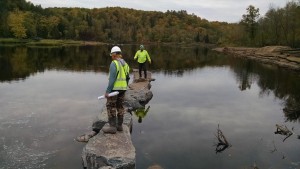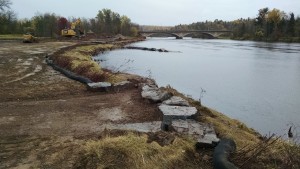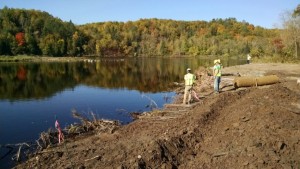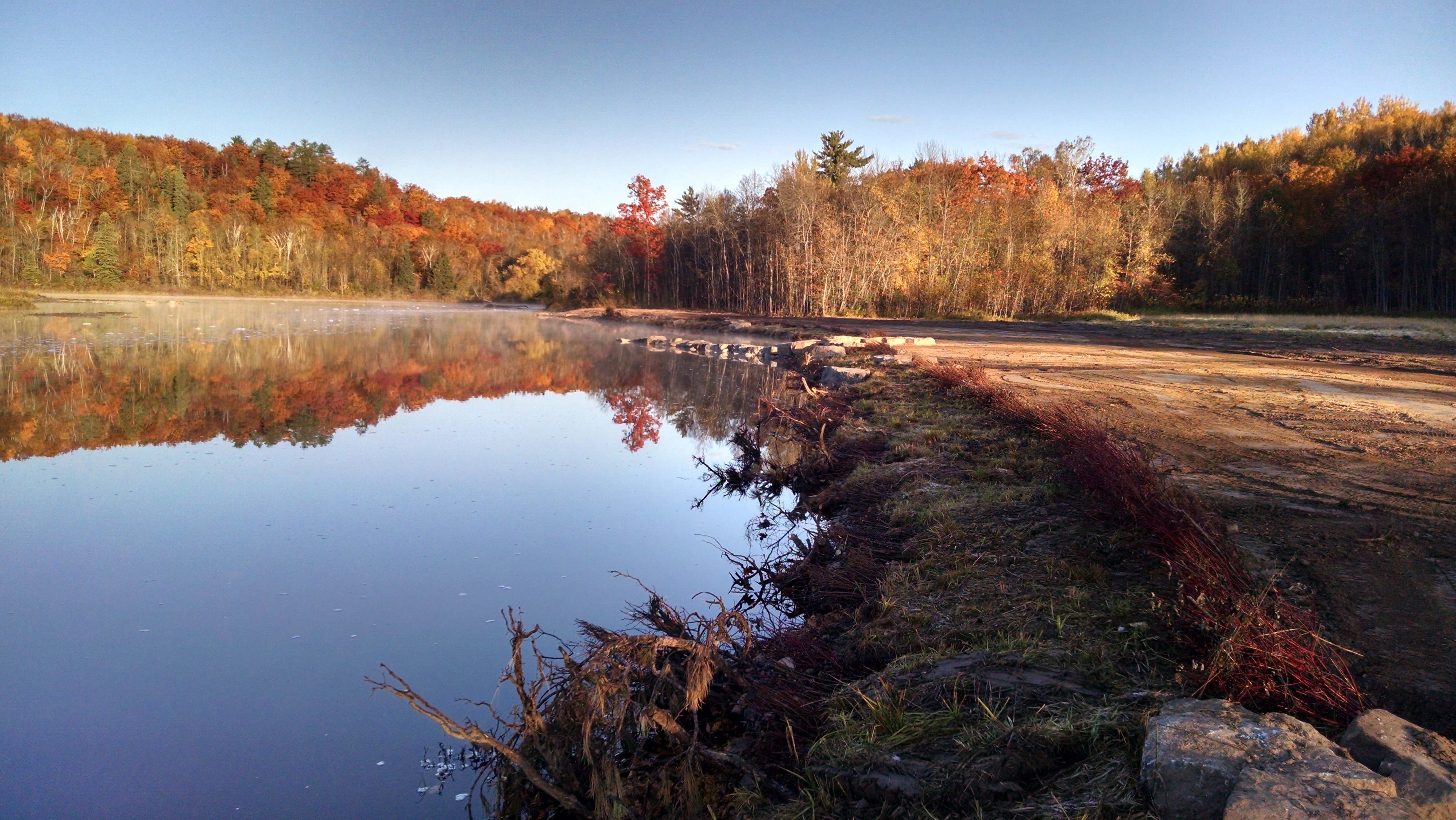St. Louis River Team Advances Restoration Goals

A history of lumber and paper production in the St. Louis River Estuary left a legacy of environmental decline and pollution. Today, this NOAA Habitat Focus Area and its partners are working together to restore the area near the western edge of Lake Superior.
Two of four planned restoration projects identified in NOAA’s Implementation Plan for the St. Louis River Estuary Habitat Focus Area have been completed to address the loss of fish and wildlife habitat in the estuary. These two projects – restoration of Chambers Grove Park and Radio Tower Bay in Minnesota – were also identified as priority actions needed to delist the St. Louis River as a federal Area of Concern (AOC), and they mark an important step toward that goal. Areas of Concern are places that have experienced environmental degradation from human activities at the local level.


River Bank Goes Natural
The Chambers Grove project restored 1,000 feet of river bank and created three acres of fish spawning habitat adjacent to the Chambers Grove City Park in Duluth, Minnesota. This restoration was completed by removing hardened shoreline, contouring the river bank, planting local vegetation, and adding in-water habitat. These upgrades help native fish species such as lake sturgeon, walleye, and longnose suckers. NOAA Fisheries provided $400,000 of 2014 funding for the project under a partnership with Minnesota’s Department of Natural Resources. The funding was provided through the national Great Lakes Restoration Initiative.
Ghosts of Saw Mills
The Radio Tower Bay restoration project removed 115,000 cubic yards of wood debris and organic material – enough to fill 35 Olympic-size swimming pools – from Radio Tower Bay upstream in the St. Louis River. The debris had accumulated as a result of historic saw milling operations that occurred from the late 1880s to the early 1900s. The debris was a hazard to navigation. In 2010 and 2013, NOAA Fisheries provided more than $2 million in total of Great Lakes Restoration Initiative funds to remove the marine debris in two phases. NOAA’s Office of Response and Restoration provided technical expertise on the debris removal.

